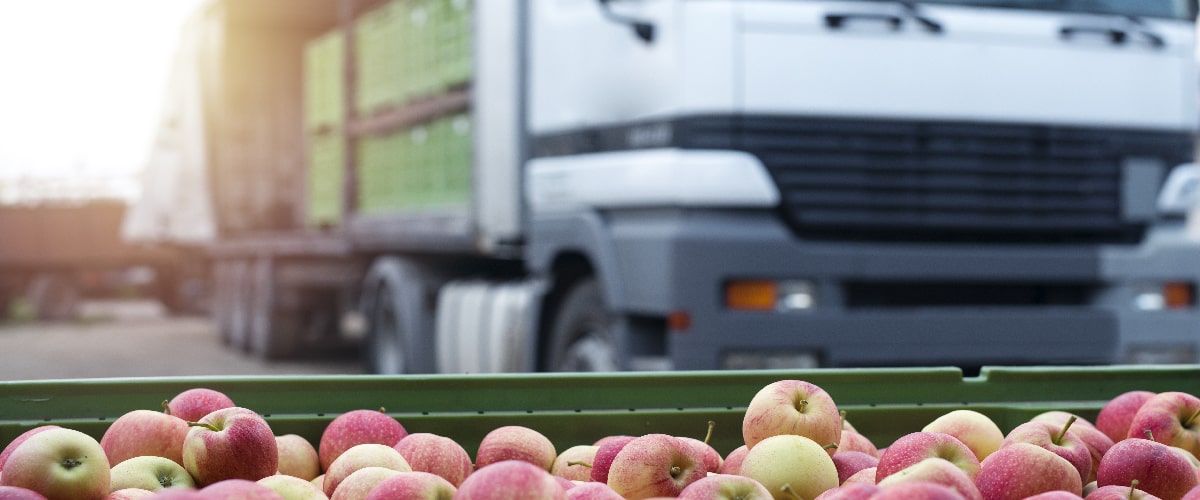 Web Content Viewer
Web Content Viewer
Supply Chain Challenges and Solutions for Food Logistics Suppliers and Distributors

From avocados and cream cheese to milk, pasta, and canned goods, demand for certain food goods continue to skyrocket, due in part to labor shortages resulting from the pandemic, along with rising energy costs, shipping constraints, and natural disasters. The New York Times reported that a crucial portion of the world’s wheat, corn, and barley is trapped in Russia and Ukraine because of the war, along with a sizable portion of the world’s fertilizers currently held in Russia and Belarus.
Meanwhile, the infrastructure needed to transport food products can be tough to come by for some distributors, especially smaller companies, and while many organizations have recently pivoted their inventories and fulfillment operations to automated systems, that’s not the case for everyone. The challenges food suppliers face for fast, efficient, and safe delivery of goods has increased significantly over the past few years, and the food industry must adopt fully to digital operations if they are to compete, especially amid today’s rising food supply chain challenges.
The delivery process and experience can vary widely across the food industry. While some companies can immediately match and meet serious demand for perishable goods, others can easily find themselves overwhelmed with orders and antiquated processes for getting the goods out the door and onto trucks.
Just like other aspects of the supply chain during the pandemic, cold trucks, refrigerated warehouses, and other aspects to the cold supply chain have been heavily strained. By consistently monitoring product demand/movement with IoT devices and utilizing mobile applications such as a mobile order entry application, food suppliers can stock and ship their perishable goods with greater efficiency and less risk of product loss or a recall. Rolling out highly efficient mobile applications that can help monitor inventory levels in real-time, is a huge benefit for food suppliers who deal with perishable goods that need to be stored at a specific temperature and humidity, for example, and even more so when transportation is a risk.
Warehouse and distribution center automation includes mobile software applications running on mobile devices such as tablets and smartphones, in addition to traditional RF equipment. Robotics and AI are technology-driven automation that helps drive fulfillment, while features within an ERP and WMS system, such as picking and receiving, warehouse scheduling, warehouse control systems, order picking, shipment verification, and cycle counting provide accuracy and helps get food and beverage products into the hands of consumers faster and more safely.
Cloud-based e-commerce solutions have become highly effective for the food supply chain and they hybrid work force. Businesses have increased their reliance on e-commerce to speed up ordering and shipping and add value to the customer experience, allowing for buyers and sellers to make online orders with mobile devices to track products, helping to alleviate inventory challenges throughout the supply chain.
Implementing streamlined e-commerce and analytics solutions will make the buying and selling experience more seamless, but pair e-commerce with tracking and temperature control technology to make the entire supply chain more efficient. By connecting an e-commerce marketplace to broader tools on a cloud-based system, such as inventory management and business analytics, logistics providers can get a more holistic view of orders, shipment and expiration dates, customer satisfaction and more – allowing business leaders to make more informed decisions about processes and partnerships within the supply chain.
Until organizations understand the necessity of meeting the moment’s digital infrastructure needs, the supply chain will continue to experience disruption. I expect we’ll see more food suppliers implementing more of these solutions this year, especially as supply chain-related challenges continue.
Joe Scioscia
Vice President of Sales
Vice President of Sales
Comments
By using this site you agree to our Privacy Policy and our Terms of Use.
Navigation
What We Offer
120 Comac Street
Ronkonkoma, NY 11779
Ronkonkoma, NY 11779
VAI - Vormittag Associates, Inc. ©2024 |
Privacy Policy |
Terms Of Use